Chapter-3: BIO-SHIELDING THE COAST OF HONAVAR FOREST DIVISION
BEACH REHABILITATION METHODS
The Honavar Forest Division in the Kanara Circle has 97 km long coastline, covering the taluks of Kumta, Honavar and Bhatkal (see
Figures 3.1, Figures 3.2 & Figures 3.3). Compared to Udupi and Dakshina Kannada the coastline is interrupted with hills and therefore rocky shores are many in between sandy beaches. There are several beautiful beaches in this Division. At present the beaches of Gokarna and Murudeshwar have become paradise for an ever growing tourist population. Many other picturesque beaches are slowly waking up to tourism. The notable beaches of the Division are Gangavali, Gokarna, Kudle, Om, Baad, Holangadde, Kumta, Handigon, Dhareshwar and Ramangindi ofKumtataluk, Haldipur, Kasarkod, Apsarakonda, Mugli, Manki and Talamakki of Honavartaluk and Bailur, Murudeshwar, Bengre, Jali, Haldin, Belke and Gorte of Bhatkaltaluk.
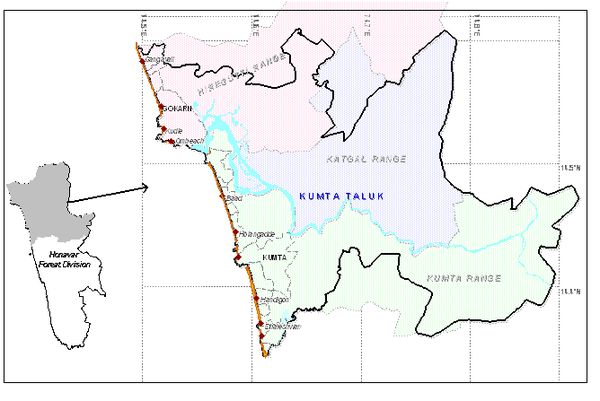
Fig. 3.1: Kumtataluk showing sea beaches
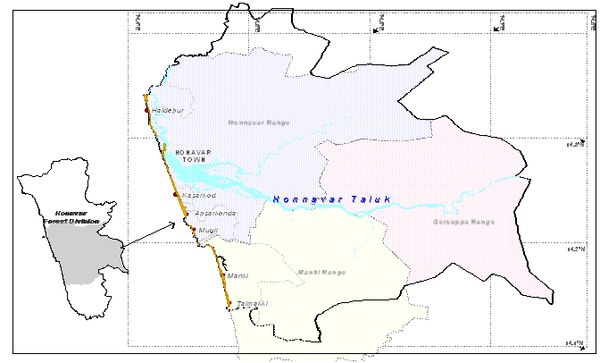
Figure 3.2: Honavartaluk showing beaches
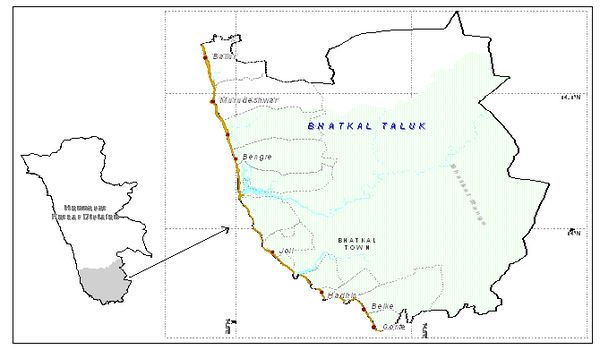
Figure 3.3: Bhatkaltaluk showing beaches
The beaches which particularly requiring bio-shielding are those which are not bordered by background hills. Mention may be made of Gangavali, Gokarna, Baad, Holangadde, part of Kumta beach, Handigon, Dhareshwar, Haldipur, Kasarkod, part of Apsarakonda, Manki, Bailur, Murudeshwar, Bengre and Jali. These beaches are vulnerable to severe erosion from possible sea level rise, if steps are not taken today to raise high sand dunes on them stabilized by vegetation.
Methods of beach protection
For prevention and mitigation of sea erosion there are both structural measures and non-structural measures (Chapter-1 for more details). Seawall may be useful in protecting specific area from erosion and storm surges. However, adverse effects can be on the downstream side. Off-shore breakwater construction is carried out for shore protection and beach formation. Such breakwaters are constructed in the Arabian Sea in the Project Seabird Naval Base. The barriers like breakwaters are associated with severe downstream shore- erosion. It is also an expensive option and needs regular maintenance to avoid rapid breakdowns.
Vegetation cover is considered a non-structural soft measure to protect the shore from erosion. Stabilized sand dunes, natural safety barriers of beaches, are the contribution of psammophytes, at no cost to human economy. Plant roots are effective in stabilizing loose sand and protecting it from erosion by waves or wind. This report is devoted to the beach situation in Honavar Forest Division of Kanara Circle and to prescribe raising of appropriate vegetation cover, as a substitute for the artificial structures which are detrimental to the functioning of the beach as an ecosystem. The walls often interfere with natural plant succession along the beaches; they reduce the aesthetics of the coast and hamper the development of coastal tourism. The sea walls are expensive to build unlike the green walls of natural vegetation. The beaches might tend to subside in their levels due to the waves pounding on the rocks and returning vigorously as their turbulent energy is not absorbed by the stone walls (Figures 3.4). Moreover, the local community will be benefited from good vegetation on the sea beach due to various non-timber products and tourism potential. Bio-shielding, referring to raising of green wallsusing appropriate plant species,is a more recent term applied for shore protection with the help of vegetation. Bio-shielding serves the dual purpose of raising the sand dunes as well as increasing the protective cover of the vegetation. Not just the sea beaches but even the backshore has to be managed under integrated coastal management programme.
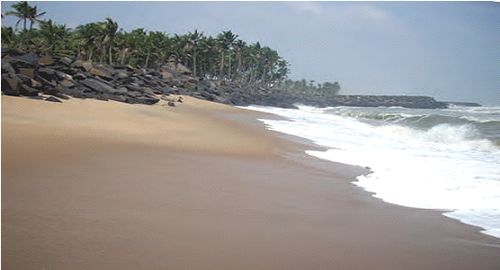
Fig. 3.4: A stone wall protected beach showing subsidence and lack of vegetation
Dune vegetation traps windblown sand and holds it on to the fore-dunes. The exposed dry sand is easily moved by high velocity winds and large volumes of sand can be rapidly shifted from one place to other. Shifting sands if deposited on herbaceous cover can smother it. But dune vegetation contains characteristic native species and has its own intrinsic biodiversity value. Beaches and dunes are important feeding, breeding and roosting grounds for sea turtles and shore birds.
Steps for protection and development of sand dunes and dune vegetation
- Dune thatching is a supporting measure for development of dune vegetation. It refers to covering of developing dunes with brushwood or twigs. It is a simple cost effective process. In our local situation this can be done with active co-operation from the local community, which should be aware of the importance of protecting the developing dunes with twigs or brushwood, so that they are not removed for fuel needs. This organic cover can last for one year and allow dune plants to develop on the sands. We can try experimentally coconut fronds and Pandanus leaves for the same purpose.
Fencing of sand dunes is an effective practice to protect the developing vegetation. Fencing is done above the high tide limit. Fencing protects the developing dune vegetation, including beach plantations, from damage from people trampling as well as from trampling and browsing of plants by cattle. Dune fencing is done on the upper beach beyond the reach of the sea waves and tides. Dune fencing allows also the fore-dunes to develop towards the sea facing side. Fences also reduce wind speed across sand surface while allowing vegetation to develop un-impeded. Local community involvement will greatly help in success of the programme. Barbed wire fencing, though not itself promoting accumulation of sand, unlike the wood or bamboo stakes, is very effective protection measure. It is not advisable to fence beaches which are visited by sea turtles for laying eggs, as they get disturbed or even get entangled if the fencing is specially of barbed wire. In such beaches there is a practice of making parallel strips of wooden fencing vertically aligned to the sea shore, farthest from the water. Thin wooden strips fastened by wires are used for such fencing (Figures 3.5). The fencing should not exceed five feet in height, and the length of any single stretch of fencing not to exceed 10 feet and leaving about seven feet gap between any two sections of parallel fencing. This type of fencing bordering the backshore of the sea allows sand to collect between strips and behind. Fencing can be parallel to the shore if it will not create regular movement of people into the beach, nor blocking the path of nesting turtles (Figures 3.6).
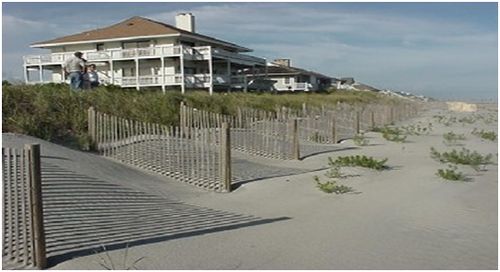
Fig. 3.5: Parallel wooden fencing vertical to the shore for sand dune development
(popular in Europe)
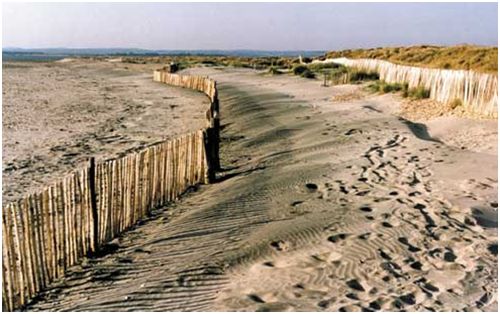
Fig. 3.6: Beach fencing parallel to the shore for development of sand dunes
Species selection
For planting just above the high tide line, for the level portion of the sandy beach, the ideal plants are creeping, salinity and desiccation tolerant perennial species such as Spinifexlittoreus, Ipomoea pes-caprae, Hydrophylaxmaritima, Launeasarmentosaand Cyperusarenarius. Occasional submergence by storm surges may not completely destroy these species which spring back to full life soon. Their stems creep along the sand surface and root at the nodes stabilizing the loose sands, and building up larger dunes. They are the forerunners of vegetational succession along the foreshore areas where the conditions are not ideal for others. Even if buried under shifting sands these plants will not perish, as they come up again on dune surface and spread by rooting at the nodes of their creeping stems which spread in all directions. They belong to the category of prime sand-binders. These species may be propagated during the rainy season by stem cuttings.
The mid-shore, where the perennial species enjoy greater security from flooding, is good for all the above species, where they continue to dominate. Additionally we also find the partial stem parasite, and yet another prime sand binder Cassythafiliformis, which forms wiry masses over the sand surface attached to their host stems. Lippianodiflora, Canavaliarosea, a leguminous creeper (common in the beaches of DK – Udupi region) are other prominent sand binders. It is a promising species that needs to be introduced into the Uttara Kannada beaches. The seeds of the legume can be collected and stored until the onset of the rainy season, when the seeds can be dibbled in the sand. Another leguminous species that spread on the mid-shore sand is Derris trifoliata. Spreading herbs suitable for the mid-shore are Glinusoppositifoliusand Sesuviumportulacastrum. Shrubs like Scaveolataccada, Daturametel, Calotropisgigantea, Clerodendruminerme, Ixoracoccinea, etc. are good for this part of the beach. Among the climbers present are PremnacorymbosaandVitistrifoliataNumerous seasonal herbs such as Pedalium murex (a local medicine for kidney stone), Alternantherasessilis, Hedyotiscorymbosa, Borreriaarticularis, Physalis minima, Vernoniacineria, Crotalaria verrucosa, C. retusa, Leucasaspera, Urgineaindica, Crinum latifoliumare associated with this part. Among the trees that grow here are Pandanusodoratissimuswhich is remarkable for its sand-binding properties, having an entanglement of strong aerial roots that serve the purpose. We also find the palmyra palm Borassusflabellifer, the ‘Noni’ tree Morindacitrifolia, Zizyphusmauritiana, Casuarinaequisetifolia, Calophylluminophyllumetc capable of surviving here.
The far part of the beach, the hind shore, has a variety of trees, shrubs, climbers and herbs. Characteristic of these sea-shore trees are Pandanusodoratissimus, Calophylluminophyllum, Borassusflabellifer, Cocosnucifera, Thespesiapopulnea, Erythrinavariegata, Pongamiapinnata, Ficusracemosa, Morindacitrifolia, Zizyphusmauritiana, Casuarinaequisetifoliaetc. Various shrubs, climbers and herbs of hinterlands can grow here according to the landscape elements associated with the beach system (such as hill, rice field, household garden etc.).
Use of Vetiver grass (Khas grass, Lavancha) or Vetiveriazizanoidesis getting popular for dune stabilization. Vetiver grass could withstand very harsh climatic and soil conditions. Planting slips of this deep rooted grass in rows can effectively check erosion. The grass grows very fast, the leaves may dry up in summer but new tillers sprout from the base during rains.
(http://www.vetiver.org/KUW_WORKSHOP_papers/KUW_6TTV.pdf).
Vetivergrass, was first developed by the World Bank for soil and water conservation in India in the 1980s. Trees take several years to develop extensive and deep root systemsnecessary to anchor the soil on steep slopes to prevent landslides and reduce erosion, whereas vetiver grass, when properly established, can provide the same effect within 12 months. Vetiver technology is today getting popular in India as a very effective erosion control measure. Vetiver grass has massive, finely structured root system (Figures 3.7 - 3.9). This massive root system that grows to few meters depth is very effective in preventing erosion by closely planting (Hengchaovanich, 1999). The dense stems of the grass can reduce run off water and trap sediment. It has high tolerance to pests, diseases and fire. It tolerates extremes of temperatures from -15o to 55oC. Its high tolerance of salinity makes it ideal candidate bio-shielding (Truong and Baker, 1998).. P Haridas of India Vetiver Network has successfully raised it in a beach resort near Chennai (personal communication).
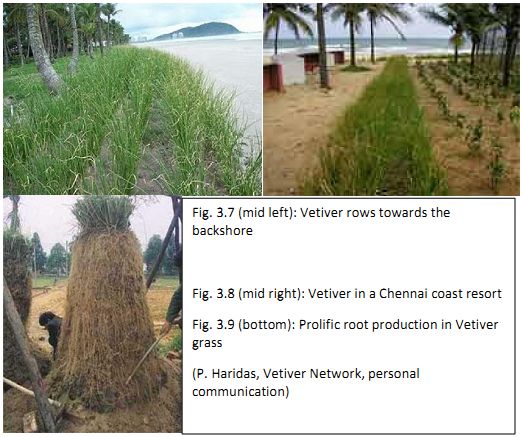
When planted as a single line, Vetiver forms a stiff, dense hedge that prevents erosion, forms natural terraces, increases soil moisture, and doesn't compete with companion crops. Once established,Vetiver can withstand droughts, fire and floods, and will grow on highly acid or alkaline soils. It can reclaim mine dumps, stabilize road cuttings, embankments and river banks, is economical to propagate and install, and requires only labor and hand tools (VetiverSystems.com, August, 12, 2010).
Elaborating on the plan for beach protection ManjunathaShetty, Assistant Conservator of Forests, Kundapur Forest Division stated: ““A green carpet of Ipomoea biloba, a creeper which grows at beaches and pins sand to the ground, will comprise the first tier. It will provide adequate cover to the beach wildlife…. The second tier will be made of Vetiver, an aromatic plant known for its thick network of roots and medicinal applications …. A thick cover of trees like Casuarina, Calophyllum and honge (Pongamiapinnata) will make up the third tier” (-ibid-).
Woody vegetation will serve as speed-breakers in coastal storms, cyclones and tsunami. They will also serve as carbon sinks, helping to enhance carbon sequestration and thereby mitigating global warming.While many species of plants are able to establish on sand or gravel beaches, the extreme conditions of desiccation, salinity and erosion allow few species to reach maturity and set seed. Severity of desiccation increases as particle size increases. On sandy beaches, successful vegetation establishment causes an increase in surface roughness, slowing both the wind and movement of sand, and resulting in the accumulation of sand in the form of coastal dunes. Vegetation cover increases with distance from the water’s edge due to decreasing levels of erosive wind and water energy.
Management, planning and execution
Beaches and sand dunes represent flexible barriers which absorb wave energy during storms by moving and adjusting their shapes and position. The management of such ecosystems requires thorough planning and proper execution.
Selection of sites for sand dune rehabilitation depends on available funding and manpower. Initially all beaches are to be surveyed and those beaches alone should be selected which have very specific conditions suitable for formation of sand dunes. Such sites should have existing dunes or having history of dunes during the past 20 years. Dunes have suffered from pressures from humans such as development of agriculture, townships nearby, sand mining etc. Many of the beaches skirted by hills are not much affected except perhaps by tourism. There is no point selecting for dune restoration beaches which are relatively in tact.
Minimum assessment of selected beaches: The following parameters are to be recorded:
- Site name
- Dune length, width and height: Dune length from map/imageries; dune width to measured at 50 m interval; the width of dry, sandy beach to be measured at 50 m interval; monthly measurement is desirable due to seasonal changes. Dune height (from few cm to meters) to be measured. Formation of new embryonic dunes to be noted
- Presence of parallel dune systems
- Dune vegetation; main species and coverage to be recorded at 50 m interval using appropriate sampling method
- Turtle nesting details: If turtle nesting exists the nesting season should be avoided for beach rehabilitation works
- History of beach and dune area
Rehabilitation methods
Sand trapping fences are useful. Fences are porous barriers that reduce wind velocity so that sand drops of wind stream near the fence. The fence should not block wind but only slow down it. Vertical wooden strips fastened by wire are ideal fences. Fences should have porosity of about 50%. Fences are to be made closer to the shore vegetation, above the dry sand bed, so that it is safe from frequent lashing by waves and tides. The fencing may be parallel to the shore or perpendicular to it in places of turtle nesting or depending on wind direction in the beach. As the cost of wood is high and pilferage from the site might happen, split bamboo may be used. In almost one years’ time much of the fence might get buried in dune forming beaches. Another fence might be raised over the dune to trap more sand. The newly built dunes should be stabilized with vegetation. The species for planting should be chosen after due consultation with the experts to increase the degree of success. Organic manures may be judiciously applied as the beach sands are infertile. Surface mulch around the plants will help in retaining moisture and in preventing erosion of loose sand during rains. Branches of trees such as of Casuarinaplaced flat on ground can help accumulation of sand. Planting should be done in the very beginning of wet season.
Co-management and awareness: As beaches are along the densely populated coastline local committees should be constituted for co-management. Periodical meetings with the community are very important. Involving local people in discussions and work will increase their level of awareness. Participation of local schools can increase the degree of success.
Post-project activities: Periodic measuring of sand deposit and spread of vegetation should be recorded
Beaches to be avoided
- Very badly eroded beaches
- Narrow beaches do not make good choice, as such beaches will be subjected to sea erosion during the rainy season
SOME IMPORTANT SPECIES FOR BIO-SHIELDING
When we consider the suitability of various species for bio-shielding of the coast, invariably we should consider the following for planting:
- Spinifexlittoreus: Pale green, rigid and rough grass spreading along the sea shore sand and most tolerant of occasional submersion. Forms formidable patches tolerant of human intervention because of its rigidity and sharpness of leaf tips; also immune to grazing and trampling by cattle. Cuttings can be planted during rainy season. It is extensively planted in Tamil Nadu to control movement of sand.
- Ipomoea pes-caprae: A creeper widely distributed over the tropical and subtropical sandy places, such as sea shores river banks etc. Atrailing vine along sand dunes. It roots at nodes, spreads rapidly and far from the base in all directions, very tolerant of salinity. Growing above the HTL the creeper forms large mats, stabilizing dunes. Branches may reach 10 m in length. Tap roots are long and deep sometimes reaching over a meter. Present throughout tropics and subtropics. Grows vegetatively from stem cuttings and also by seeds. Can resist salt spray and wave splash. It can recover from the high waves from cyclones. Survives heavy rains and drought.The creeper adds to the attractiveness of beach by its large deep rose to purplish flowers. Cuttings can be planted during rainy season. Leaf extract is a traditional remedy for different types of inflammations including dermatitis and skin injuries caused by poisonous jelly fishes. The extract is said to have potency equal to that of aspirin. The extract has antispasmodic activity. It can be propagated by seeds as well as cuttings.
- Canavaliaspp: This perennial legume is an extensive creeper and climber, a very effective sand-binder more found in Udupi-DK beaches. Canavaliaroseais common along open mid-shore sands; it is pan-tropical, but exclusive to coastal sands. whereasC. catharticaoccurs along the tree line behind. Canavaliaforms dense mats along the sand. It is an under-explored legume as human food; raw seeds of Canavaliapossess 31-35% proteins and are rich in potassium, phosphorus, sodium and calcium. About 46 species of soil fungi are found associated with the roots of this species in different studies. The tender pods of C. catharticaare used as vegetable. Both species can withstand desiccation of the shore and increase soil fertility due to nitrogen fixation by root bacteria. In Padubidri and Sasihitlu the fisherfolks occasionally consume pods and ripe beans. The beans are soaked in water for long time for detoxification. The plants can be propagated by seeds.
- Pandanusspp. are shrubs to trees, often growing gregariously along the beaches. P. odoratissimusis commoner along the shores and borders of backwaters. P. kaidaoccurs along the bunds of coastal rice fields. Pandanuscan grow on a wide variety of soils including on rocky beaches. It can withstand drought, strong winds and salt spray as well as occasional salt water inundation. The plants can resist moderate to severe cyclonic storms. In habit they are large shrubs to small trees. The species produces strong, aerial roots from the stem. These roots grow downward and anchor the plants firmly to the substratum. Flowers are fragrant and the fruit resembles pine-apple. The units of fruits are dispersed by ocean currents; seeds maintain their viability for months together. Seeds are also dispersed by birds and fruit bats; crabs also feed on the fruits. Pacific islands have several varieties of Pandanustectoriuswith edible fruits. The natives carefully propagate the species by cuttings. Flavoured varieties of fruits in these islands are used for jams, jellies and juice. The Indian varieties have calcium oxalate crystals that cause irritation. Leaves are used for mats, baskets and hats. Mats are very good as floor mats and last for several years. Fragrant flowers are sold in the market and a perfume is also extracted from the flowers. Along the coast it renders valuable ecosystem services. Apart from its value as a shore protector its fruits are eaten by birds, bats and crabs. The plant has a role in marine ecosystem and food chains. It provides shelter for birds. Honey bees forage on female flowers and fruits. Plant is progated from seeds as well as branch cuttings.
- Calophylluminophyllum: Medium to large evergreen tree prominent along the coast with dark green shady foliage and fragrant flowers. The drupe is light yellow when ripe and carries single globular, oil rich seed within a hard endocarp. The tree grows in deep soil near sea as well as on pure sand. It is an efficient shore protector. Birds and bats feed on the fruit pulp and disperse the seeds, which are also water dispersed. Germination takes place in 50-55 days. Germination percentage is increased by removal of shell. The seeds yield oil; a tree yields about 22 kg of oil from its seeds. Oil is traditionally used for lighting; it is used for varnishing wood works since it contains 10-30% resin. Used as a lubricant; for tanning of leather; for applying on boats; for making soap, which has anti-fungal properties. Camphor-mixed oil applied for ringworm. Being anti-bacterial, useful for treating burns; also for ulcers and diseases of hooves of cattle. Kernel paste for painful joints; oil applied for rheumatism and gout; for scabies and skin disease. Oil cake is good organic manure; it also controls root nematodes. Timber is very useful. The tree renders considerable ecosystem services; its dense canopy is good habitat for birds and other animals.
The University of Agricultural Sciences of GKVK, Bangalore, in its Biofuel Park at Hassan produces high quality bio-diesel from the seeds. Farmers’ associations have been formed to plant, collect and process seeds of Calophyllum, Pongamia, neem,mahuaetc. to produce bio-fuels. A fair price of Rs. 13-15/kg is paid to the seed collectors of Calophyllumwhich is becoming very popular with the farmers and poor landless persons who can at least gather seeds and sell and make their livelihood. The Biofuel Park, under the patronage of the Biofuel Task Force of Karnataka is organizing massive planting of the species widely in the State. The tree being ideal for the sea-shore should be planted in millions for not only the biofuel but also for its multiple uses and ecosystem services as well as a future source of income for the landless and unemployed.
- Borassusflabellifer: This tall palm, known as palmyra, is mainly found in DK and Udupi shores. It is very rare in Uttara Kannada; a couple of trees occur in Ramangindi beach and few along the rocky shore of Apsarakonda. Male and female plants are different. Fruits are large drupes, which while tender produces sweet and juicy endocarp, much in demand during the summer months. Ripe drupes are heaped in one place and covered with soil. It takes 10-12 weeks for the seeds to germinate. The palm is very slow growing, but strong and sturdy. Close planting can beautify the sea-shore as well as serve as a defense against erosion. The male inflorescence is tapped for toddy from which palm sugar and sugar candy are produced. The sugar candy is popular for its soothing effects on cough. Leaves are used for weaving mats and various fancy items.
- Morindacitrifolia: A small tree along the coast, it is sparingly found in Karnataka. Flowers occur in heads and the multiple fruits reach 2.5 cm in diameter. The tree was formerly cultivated as a crop for the roots which yield a dye. The dye yield is maximum in 3-4 years old plants. Morindine is the coloring principle of the roots. Wood yields an yellow dye, which gives mordanted cotton, silk and wool red, purple and chocolate colours. Most parts of the plant are medicinal. It tolerates salinity and drought conditions and grow well on sandy beaches. It can attain a height of up to 20 feet and serve the dual purpose of preventing soil erosion and acting as a windbreaker. Normally stem cutting is used for propagation. The planting distance is about 15 feet apart. During the last decades Noni products, particularly the juice made from the fruit, has turned into a huge business! By planting Noni along the coastline the country can, apart from preventing soil erosion, capture a major chunk of the fast-growing Noni market. Noni starts yielding in 18 months and has a productive life span of around 40 years.
Notes on Olive Ridely turtle in Honavar Division
Olive Ridleyis the only sea turtle that nests on the sea coast of Honavar Division. It is protected under Wildlife Protection Act and classified under Schedule-I. It is listed in IUCN Red List as vulnerable. Sea Turtle visiting the coast for nesting is prone to poaching and eggs laid by them are also exposed for various threats. They need to be protected from human beings, feral dogs, jackals and many other predators. Forest Department is working for the conservation of sea turtles since 1984. Earlier the turtles were recorded only from the sandy beaches of Jali village of Bhatkal. Later more beaches having potential for conservation of sea turtles have been identified and conservation programmes are under way through the involvement of a local NGO. Sea Turtle nesting season starts in the month of September. Six sea turtle potential beaches are identified for conservation.
Details regarding turtle hatcheries and associated matters in Honavar Forest Division are given in Table 3.1 below:
| Sl. No. |
Year |
Hatchery |
Eggs Collected |
Hatchlings Released |
No of Nests |
| 1 |
2007-08 |
Apsarakonda |
1048 |
593 |
|
| |
|
Gangavali |
1712 |
789 |
|
| |
|
Dhareshwara |
1559 |
800 |
|
| |
|
Kadle |
1802 |
907 |
|
| |
|
Ramanagindi |
163 |
48 |
|
| |
|
TOTAL |
6284 |
3137 |
|
| |
|
|
|
|
|
| 2 |
2008-09 |
Apsarakonda |
228 |
92 |
2 |
| |
|
Gangavali |
247 |
142 |
2 |
| |
|
Dhareshwara |
3180 |
1158 |
30 |
| |
|
Haldipur |
1840 |
769 |
17 |
| |
|
TOTAL |
5495 |
2161 |
51 |
| |
|
|
|
|
|
| 3 |
2009-10 |
Apsarakonda |
341 |
170 |
3 |
| |
|
Hosahitlu(Manki) |
897 |
537 |
10 |
| |
|
Kagal |
278 |
270 |
3 |
| |
|
Haldipur |
1005 |
463 |
11 |
| |
|
TOTAL |
2521 |
1440 |
27 |








